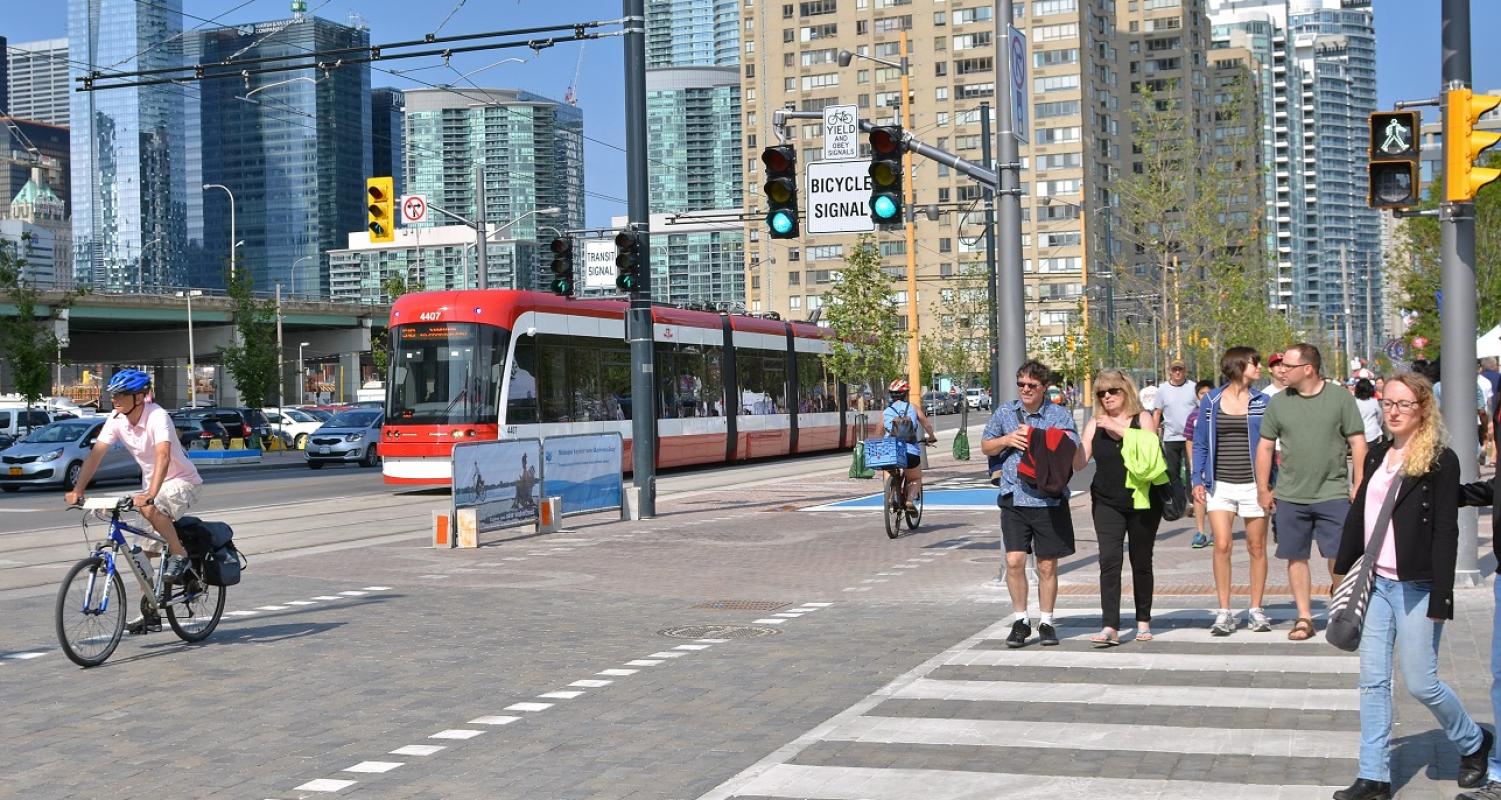Waterfront Transit Reset
The Waterfront Transit Reset provides a vision for high quality transit that will integrate waterfront communities, jobs, and destinations and link the waterfront to the broader City and regional transportation network.
In partnership with the City of Toronto and the Toronto Transit Commission (TTC), Waterfront Toronto undertook a multi-phase Waterfront Transit "Reset" study to help establish a vision and plan for a comprehensive waterfront transit network.
A Phase 1 study was completed in 2016, and Phase 2 took place in 2017. The study concluded in 2017 with a recommended waterfront transit network solution.
Quick Facts
Toronto's waterfront is undergoing a significant transformation, with rapid growth in many precincts along the water's edge, including Mimico, Humber Bay Shores, Liberty Village, Fort York, King/Spadina, City Place, South Core, and King/Parliament. Growth in several more precincts along the waterfront is either underway or planned, including Lower Yonge, North Keating, Port Lands, South of Eastern, and the emerging East Bayfront, Quayside and West Don Lands neighbourhoods. Many key recreational and cultural destinations have emerged along the waterfront with this growth.
Throughout the years, transit planning along the waterfront has been incremental. The study provided a comprehensive plan for a transit network that can respond to the rapid emerging growth and transformation. The current and future anticipated demand for transit along much of the waterfront area makes it imperative to define a long-term transit solution.
The integrated network solution for waterfront transit is being coordinated with the directions emerging from other major transit initiatives currently underway, including Smart Track, Relief Line, Scarborough Transit Planning, and the Metrolinx Regional Express Rail (RER) expansion program.
Phase 1
Toronto City Council directed City staff to undertake a Phase 1 review of waterfront transit initiatives and options in partnership with Waterfront Toronto and the TTC. The purpose of Phase 1 was to review all relevant background materials; create an overall study vision with related objectives; develop a preliminary list of improvement concepts; identify preferred concepts for further study and develop a scope of work for Phase 2. Phase 1 of the study was completed in October 2016 with a Final Phase 1: Network Vision Report.
Phase 2
In July 2016, City Council directed City Staff, in partnership with Waterfront Toronto and the TTC, to initiate Phase 2 of the Waterfront Toronto "Reset" Study. Phase 2 study undertook a waterfront network operations and travel demand analysis, functional design, cost estimates, and comparative evaluations of alternatives for improvements to transit for key areas of the network. The completion of these tasks helped identify and confirm priority areas for implementation.
Past Studies
In previous years, numerous studies have taken place for segments of transit that would connect to/complement the existing 509 Harbourfront LRT and 501 Queen Streetcar.
Visit the City of Toronto's website to learn more about past studies and to read background materials.
Consultation
In May 2016, two public meetings were held that included the study progress to date and a range of preliminary transit concepts under consideration. The purpose of this public meeting was to get feedback on the opportunities and constraints along the waterfront, as well as the preliminary concepts and evaluations.
Public consultation for the Waterfront Transit "Reset" Phase 2 Study in September 2017 provided the public with an update on the project's progress and generated important feedback.

